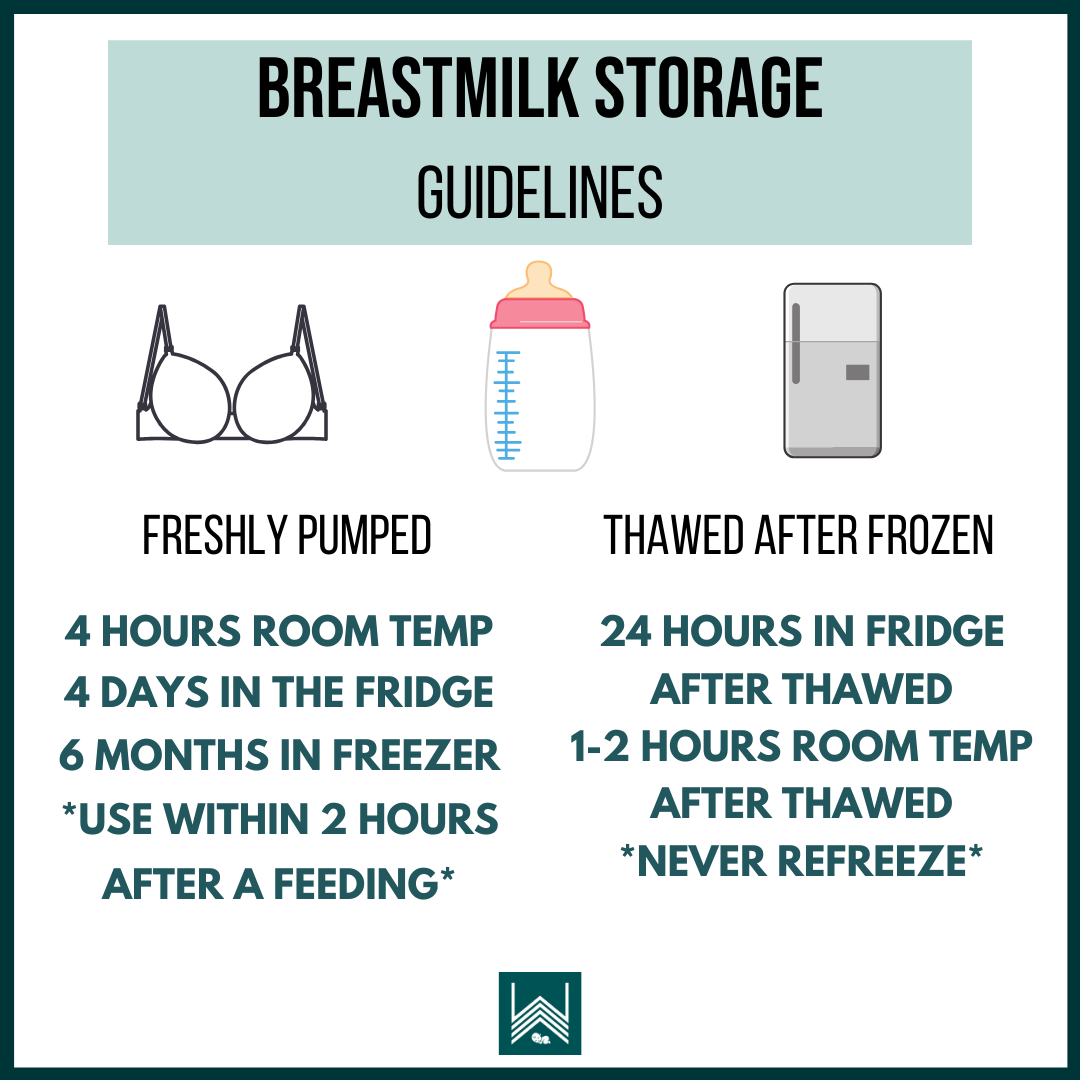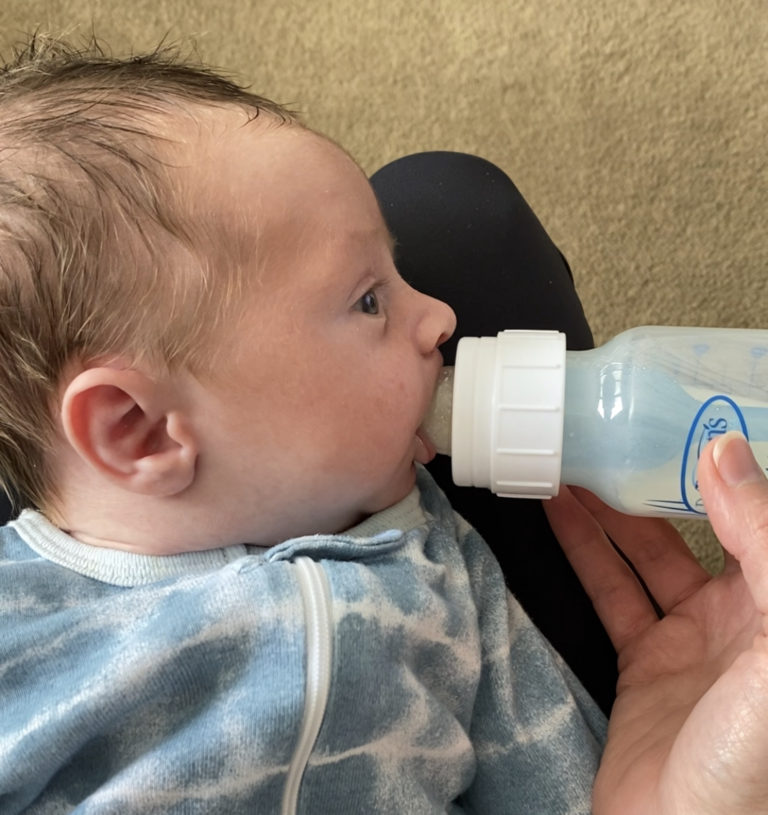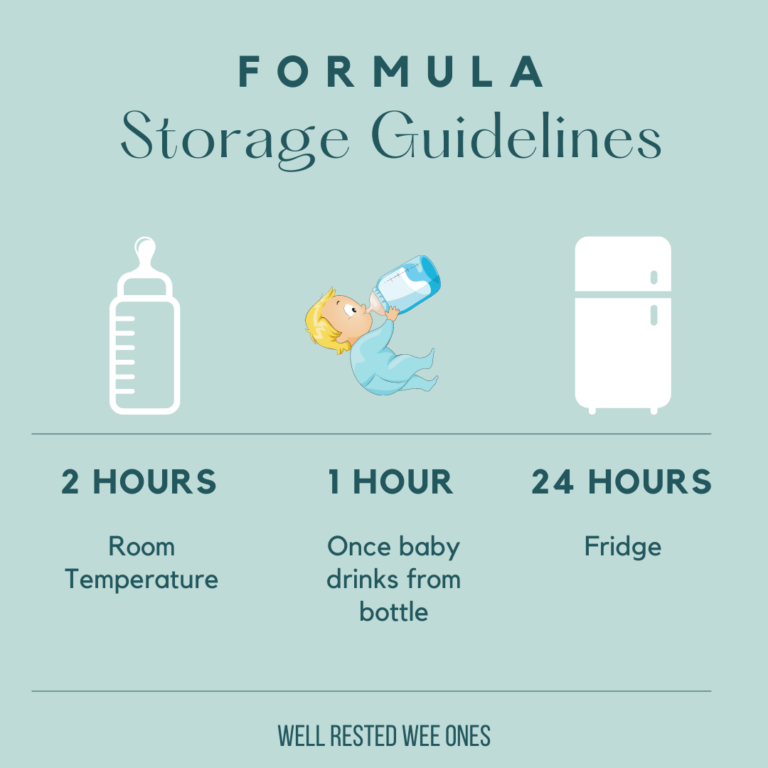Breastmilk Storage Guidelines
If you’re a breastfeeding mom, it’s important to learn breastmilk storage guidelines as many mamas choose to pump breastmilk at some point in their breastfeeding journey.
Whatever the reason, it’s important to follow breastmilk storage guidelines to ensure the optimal quality of your breastmilk for the health and safety of your baby.
These guidelines apply to healthy full-term infants. If your baby was preterm or has underlying medical conditions check with your primary care provider.
Breastmilk Storage Guidelines from CDC
Freshly Pumped Milk
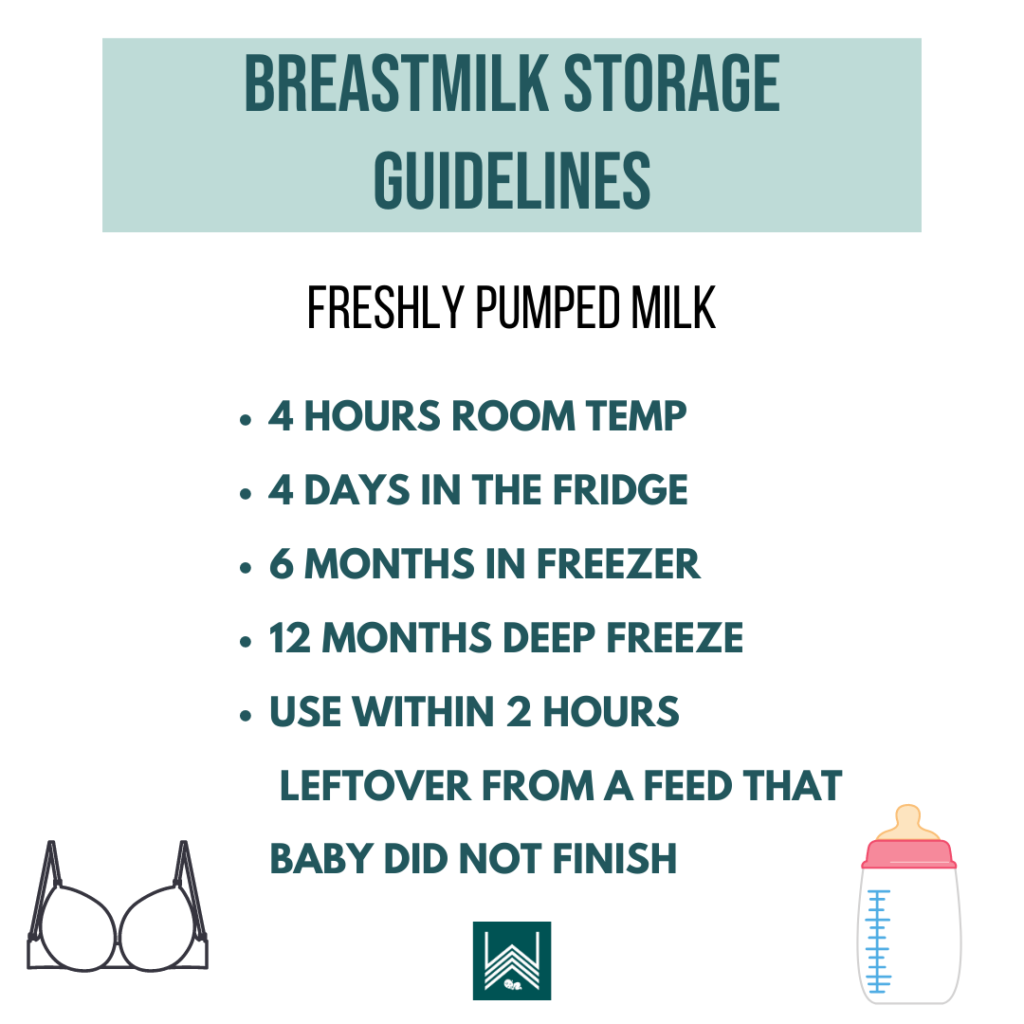
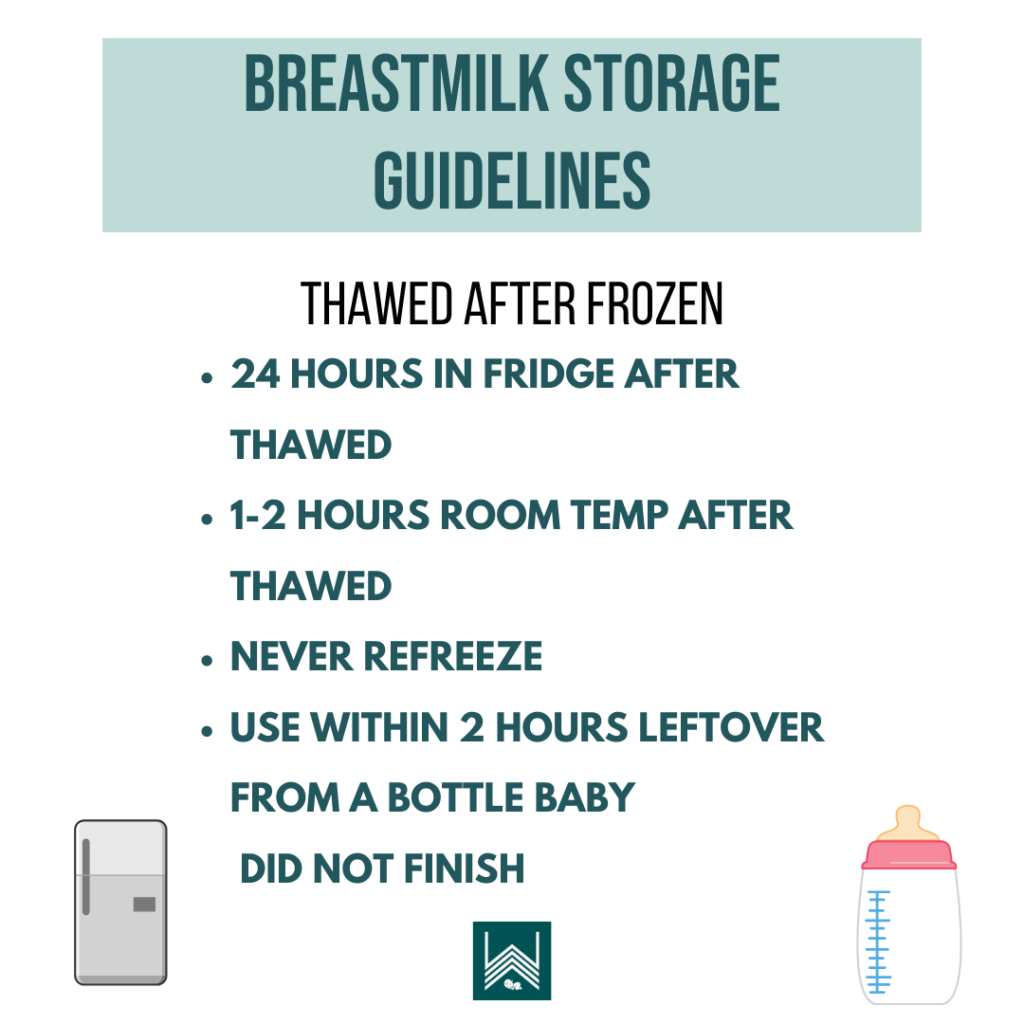
Breastmilk storage tips after pumping
- Always wash your hands with warm water and soap or use an alcohol-based hand sanitizer that has 60% alcohol before handling pump parts or breastmilk
- Use breast milk storage bags or food-grade safe containers or bottles to store milk in the fridge.
- If you don’t think you will use freshly pumped milk within 4 days, freeze right away to preserve the quality.
- Label each bag with the date and quantity of milk that was pumped.
- Store milk in small quantities of 2-4 ounces.
- Do not store milk in the door of the refrigerator or freezer.
- Leave room at the top of the bag when freezing as milk expands.
- NEW AUGUST 2021: From AAP Mothers can mix warm milk and cold, or even consider pooling milk from 24 hours together, which may help even out variability in nutrients due to pumping time or breast emptying (which influences fat content of the milk
- Freeze your breastmilk with the bag laying flat! Once frozen you can stack in piles!
Thawing and Warming Milk
- Thaw frozen milk overnight in the fridge, under warm running water, or in a warm cup of water
- NEVER microwave frozen or refrigerated breastmilk
- Once you have brought frozen or refrigerated milk to room temperature it should be used within 2 hours
Feeding Pumped Breastmilk
- Breastmilk can be offered to your baby cold, at room temperature, or warm.
- If you choose to warm your breastmilk, place milk in a warm cup of water
- If you’re away from home and need to warm milk use the Baby’s Brew portable milk warmer. Use code Wellrested15 for 15% off
- DO NOT MICROWAVE breastmilk!
- If warmed, always test on your wrist before offering it to your baby
- Swirl breastmilk together to combine the fat layer which can separate when refrigerated
- If any excess milk remains in the bottle after feeding, it must be used or thrown away after 2 hours due to natural bacteria from your baby’s mouth.
- You can not refreeze breastmilk that was frozen
Need more help on your breast or bottle-feeding journey?
Set up a consultation to work 1:1 with me!
Have a few feeding questions?? I also have email and phone support!
Please Share this Post with a Mama!

